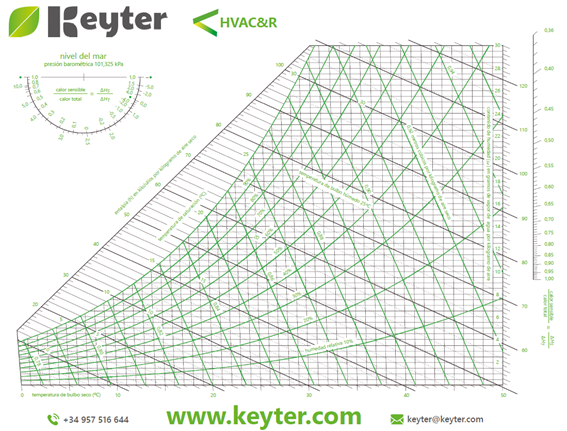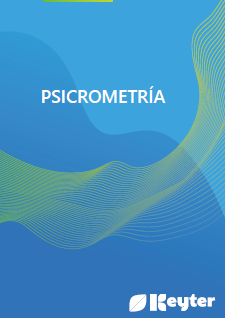What is Psychrometry?
Conditioning a room to achieve an optimum level of air quality and humidity is closely linked to the heating or cooling of the space. The professionals in charge of the fitting out and conditioning of spaces, from dwellings or premises to industrial buildings, have to make one of the most important calculations to determine the optimum level of air quality.
The concept of psychrometry emerges from these needs, as it is from this concept that the thermodynamic properties of humid air can be studied to understand how they influence the comfort of humans in a given room or space.

But what do we mean when we talk about psychrometry? The Royal Spanish Academy gives two definitions for this concept:
– Determination of the degree of humidity of atmospheric air.
– Part of Physics that studies the thermodynamic properties of atmospheric air and the effect of atmospheric humidity on materials.
Before continuing, we must be clear about the concepts of dry air and humid air. The latter is composed of the former and water vapour, i.e. what we know as humidity is the term we use to describe the presence of water vapour in the air.
Without mentioning the psychrometric diagram, which is a graph constructed from several equations and serves as a calculation tool, we cannot discuss psychrometrics, as it studies the aforementioned humid air. This graph is made up of a set of curved and straight lines that relate the different properties of humid air to each other; this allows us to obtain the other variables from those we know: dry bulb temperature, specific humidity and atmospheric pressure. As for the latter, it is essential to know the height above sea level as the diagram varies completely with it.
Broaden your knowledge with our video on the Wet Air Diagram:
More articles
Interested in other (technical) knowledge articles? Keep yourself up to date and read them all



